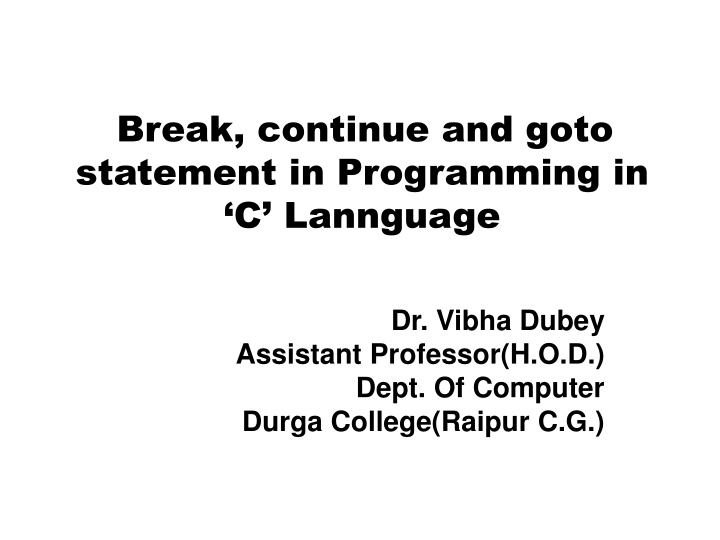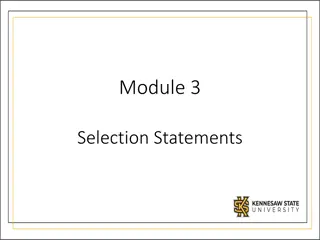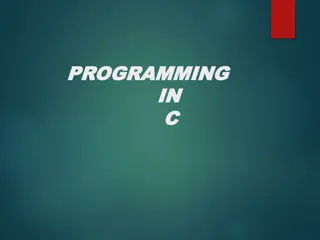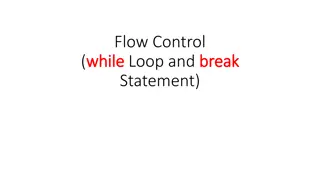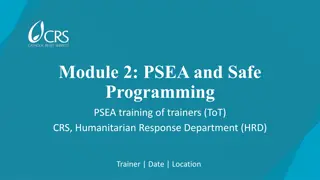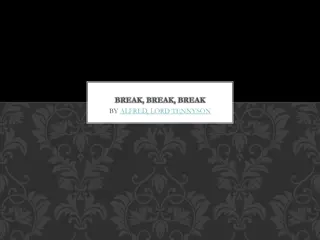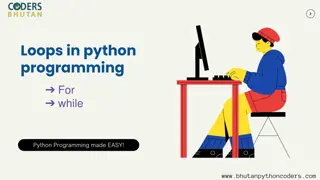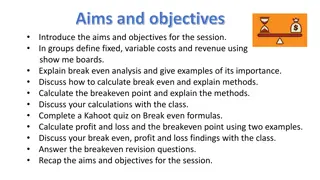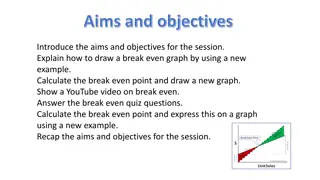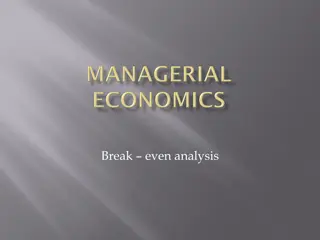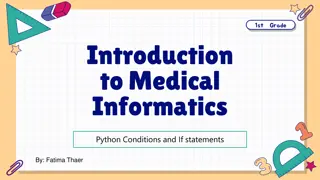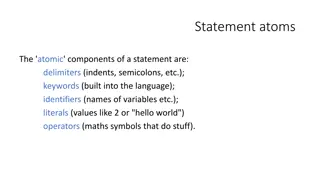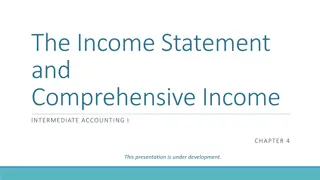Break, Continue, and Goto Statements in C Programming
The usage of break to exit loops, continue to skip iterations, and goto for unconditional jumps in C programming. Examples and explanations provided by Dr. Vibha Dubey, Assistant Professor at Durga College, Raipur, C.G.
Download Presentation

Please find below an Image/Link to download the presentation.
The content on the website is provided AS IS for your information and personal use only. It may not be sold, licensed, or shared on other websites without obtaining consent from the author.If you encounter any issues during the download, it is possible that the publisher has removed the file from their server.
You are allowed to download the files provided on this website for personal or commercial use, subject to the condition that they are used lawfully. All files are the property of their respective owners.
The content on the website is provided AS IS for your information and personal use only. It may not be sold, licensed, or shared on other websites without obtaining consent from the author.
E N D
Presentation Transcript
Break, continue and goto statement in Programming in C Lannguage Dr. Vibha Dubey Assistant Professor(H.O.D.) Dept. Of Computer Durga College(Raipur C.G.)
Break statement(break) Sometimes it becomes necessary to come out of the loop even before loop condition becomes false then break statement is used. Break statement is used inside loop and switch statements. It cause immediate exit from that loop in which it appears and it is generally written with condition. It is written with the keyword as break. When break statement is encountered loop is terminated and control is transferred to the statement, immediately after loop or situation where we want to jump out of the loop instantly without waiting to get back to conditional state. When break is encountered inside any loop, control automatically passes to the first statement after the loop. This break statement is usually associated with if statement. Example
Example : void main() { int j=0; for(;j<6;j++) if(j==4) break; } Output: 0 1 2 3
Continue statement (key word continue) Continue statement is used for continuing next iteration of loop after skipping some statement loop. When it encountered passes through the beginning of the loop. It is usually associated with the if statement. It is useful when we want to continue the program without executing any part of the program. The difference between break and continue is, when the break encountered loop is terminated and it transfer to the next statement and when continue is encounter control come back to the beginning position. In while and do while loop after continue statement control transfer to the test condition and then loop continue where as in, for loop after continue control transferred to the updating expression and condition is tested. of control automatically
Example: void main() { int n; for(n=2; n<=9; n++) { if(n==4) continue; printf( %d , n); } } Printf( out of loop ); } Output: 2 3 5 6 7 8 9 out of loop
goto statement in C The goto statement is a jump statement which is sometimes also referred to as unconditional jump statement. The goto statement can be used to jump from anywhere to anywhere Syntax: Syntax1 | Syntax2 ---------------------------- goto label; | label: . | . . | . . | . label: | goto label; In the above syntax, the first line tells the compiler to go to or jump to the statement marked as a label. Here label is a user-defined identifier which indicates the target statement. The statement immediately followed after label: is the destination statement. The label: can also appear before the goto label; statement in the above syntax. within a function.
Example #include <stdio.h> int main () { /* local variable definition */ int a = 10; /* do loop execution */ LOOP:do { if( a == 15) { /* skip the iteration */ a = a + 1; goto LOOP; } printf("value of a: %d\n", a); a++; }while( a < 20 ); return 0; }
